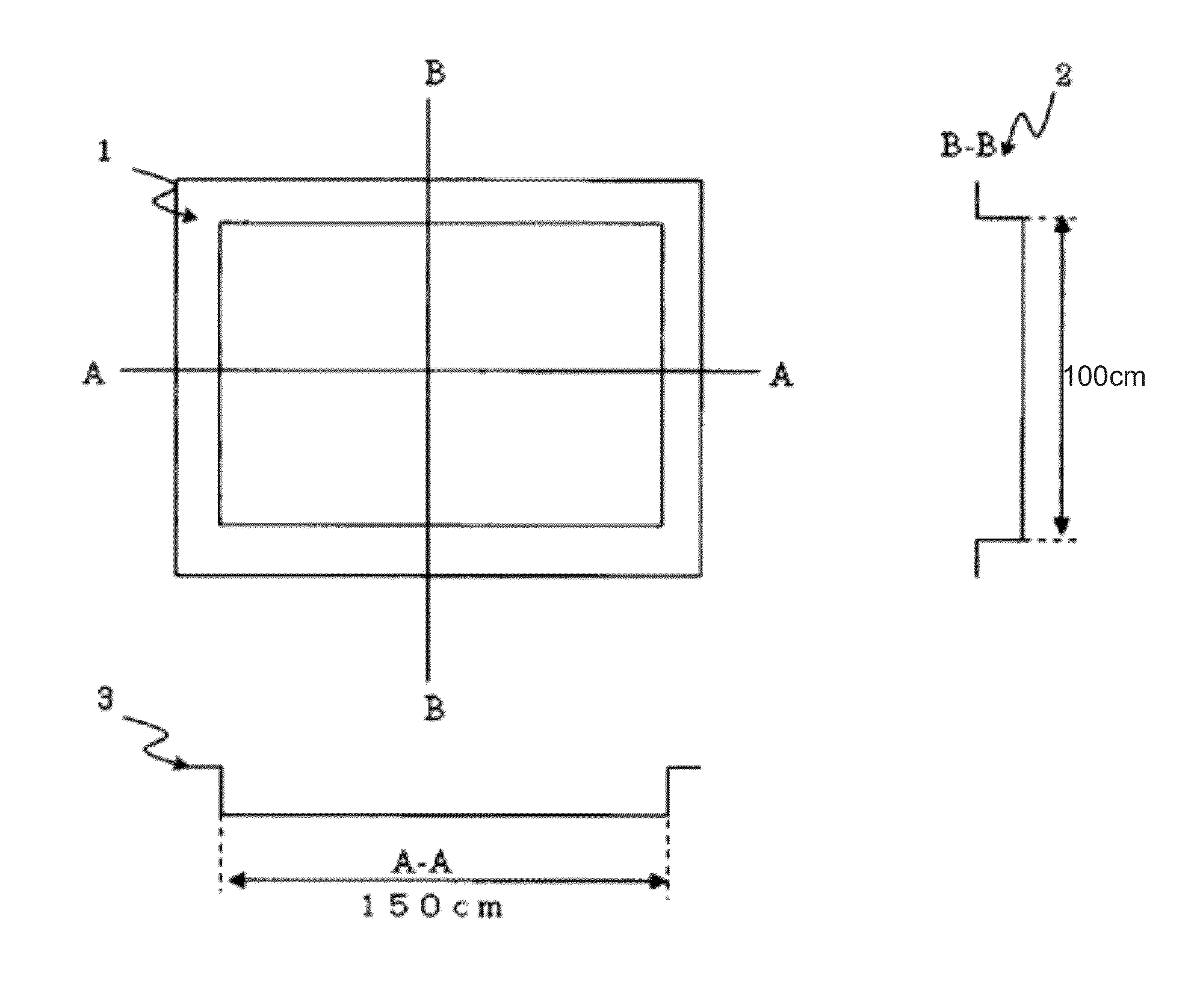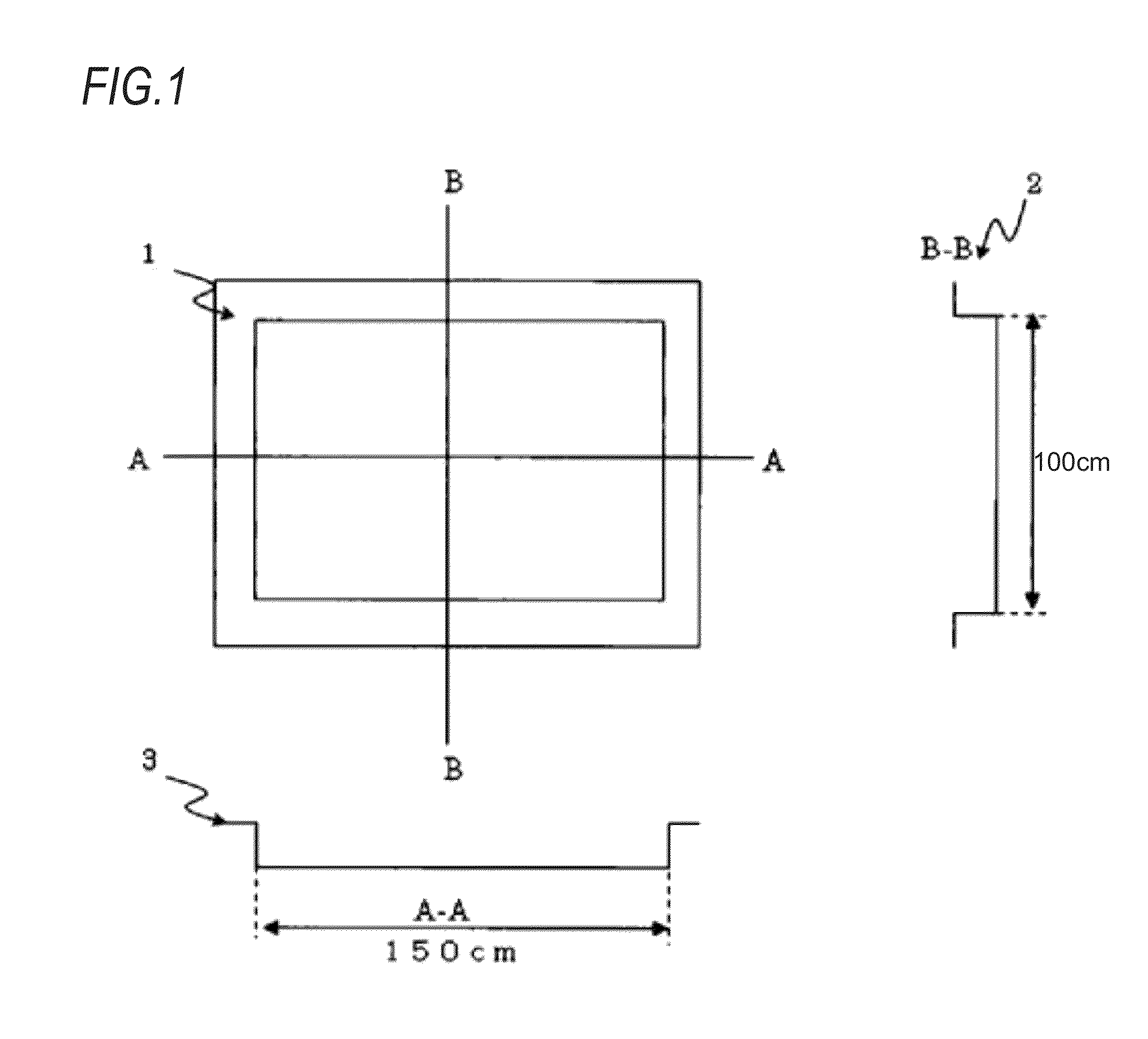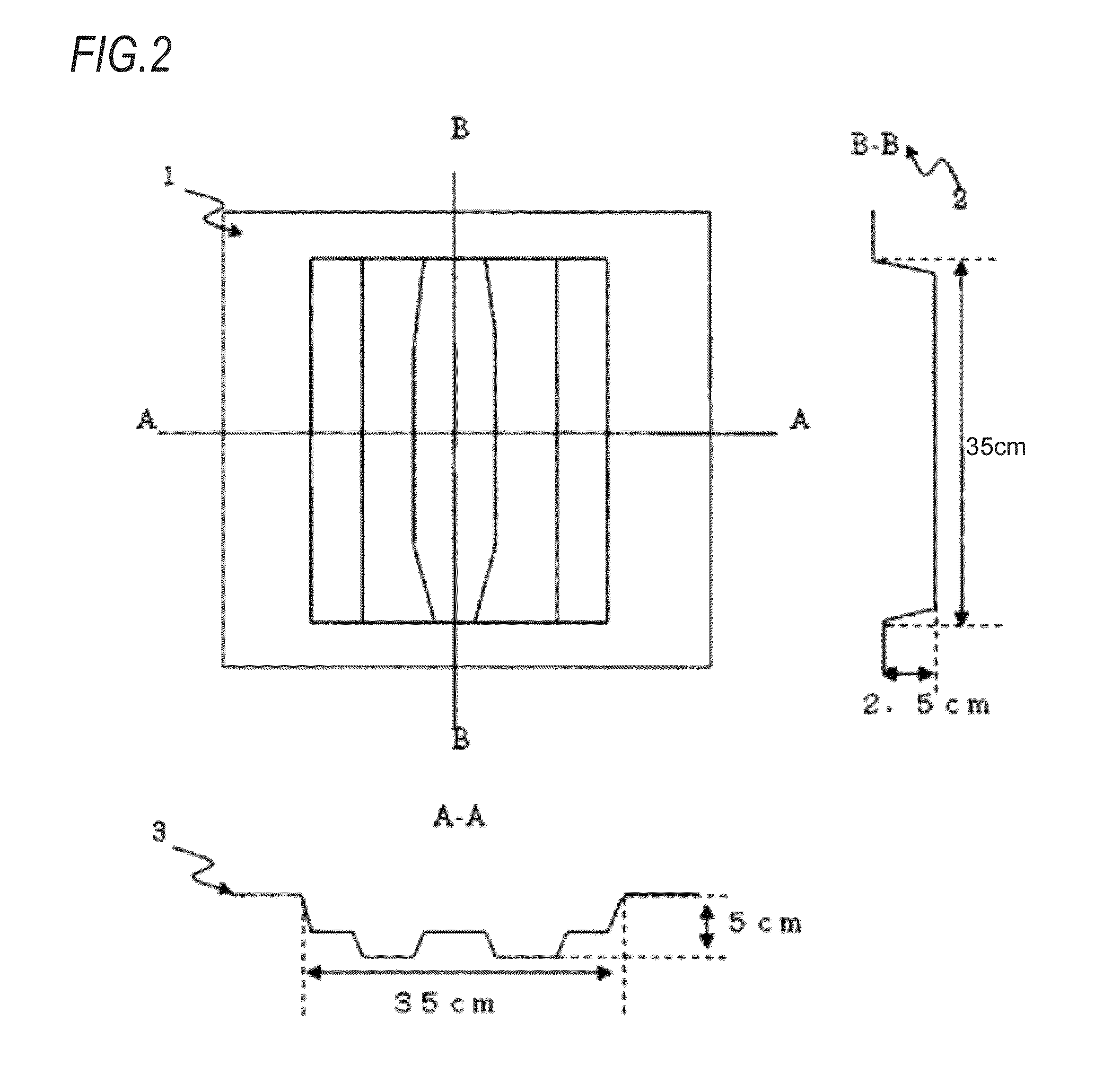Method for Manufacturing Shaped Product by Low-Pressure Molding
- Summary
- Abstract
- Description
- Claims
- Application Information
AI Technical Summary
Benefits of technology
Problems solved by technology
Method used
Image
Examples
manufacturing example 1
[0154]Carbon fibers (Tenax STS40-24KS) were widened to a width of 20 mm and cut into a fiber length of 10 mm. The carbon fibers were introduced into a tapered tube at a supply amount of 301 g / min. Within the tapered tube, air was blown to the carbon fibers such that fiber bundles were partially fiber-opened to a required ratio and sprayed on a table provided below the outlet of the tapered tube. A polycarbonate resin, as a matrix resin, that had been frozen-pulverized into an average particle diameter of about 710 μm was supplied into the tapered tube at 480 g / min, and was sprayed together with the carbon fibers. Accordingly, a random mat with a thickness of about 1 mm which includes the carbon fibers (average fiber length: 10 mm) mixed with polycarbonate was obtained. The result is noted in Table 1. Here, carbon fiber bundles (B1) having the carbon fiber of less than the critical number of single fiber and single carbon fibers (B2) within the carbon fibers (B) were separated from e...
manufacturing example 2
[0155]Carbon fibers (Tenax IMS60-12K) were cut into a length of 20 mm. The carbon fibers were introduced into a tapered tube at a supply amount of 1,222 g / min. Within the tapered tube, air was blown to the carbon fibers such that fiber bundles were partially fiber-opened to a required ratio and sprayed on a table provided below the outlet of the tapered tube. PA66 fibers, as a matrix resin, that had been dry-cut into 2 mm, were supplied into the tapered tube at 3000 g / min, and were sprayed together with the carbon fibers. Accordingly, a random mat with a thickness of about 10 mm which includes the carbon fibers (average fiber length: 20 mm) mixed with polyamide 66 was obtained. The result is noted in Table 1.
manufacturing example 3
[0156]Carbon fibers (Tenax STS40-24KS) were widened to a width of 20 mm and cut into a fiber length of 10 mm. The carbon fibers were introduced into a tapered tube at a supply amount of 301 g / min. Within the tapered tube, air was blown to the carbon fibers such that fiber bundles were partially fiber-opened to a required ratio and sprayed on a table provided below the outlet of the tapered tube. A polybutylene terephthalate (PBT) resin, as a matrix resin, that has an average particle diameter of 1 mm was supplied into the tapered tube at 480 g / min, and sprayed together with the carbon fibers. Accordingly, a random mat with a thickness of about 1 mm which includes the carbon fibers (average fiber length: 10 mm) mixed with PBT was obtained. The result is noted in Table 1.
PUM
| Property | Measurement | Unit |
|---|---|---|
| Length | aaaaa | aaaaa |
| Length | aaaaa | aaaaa |
| Fraction | aaaaa | aaaaa |
Abstract
Description
Claims
Application Information
 Login to View More
Login to View More - R&D
- Intellectual Property
- Life Sciences
- Materials
- Tech Scout
- Unparalleled Data Quality
- Higher Quality Content
- 60% Fewer Hallucinations
Browse by: Latest US Patents, China's latest patents, Technical Efficacy Thesaurus, Application Domain, Technology Topic, Popular Technical Reports.
© 2025 PatSnap. All rights reserved.Legal|Privacy policy|Modern Slavery Act Transparency Statement|Sitemap|About US| Contact US: help@patsnap.com



